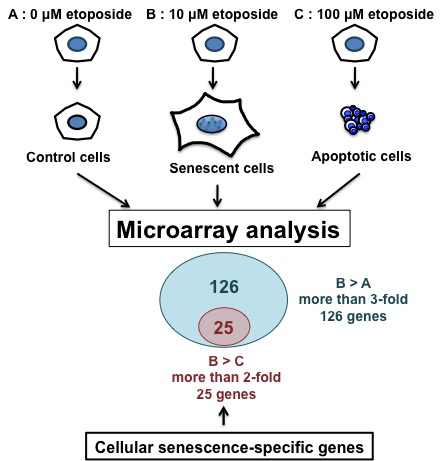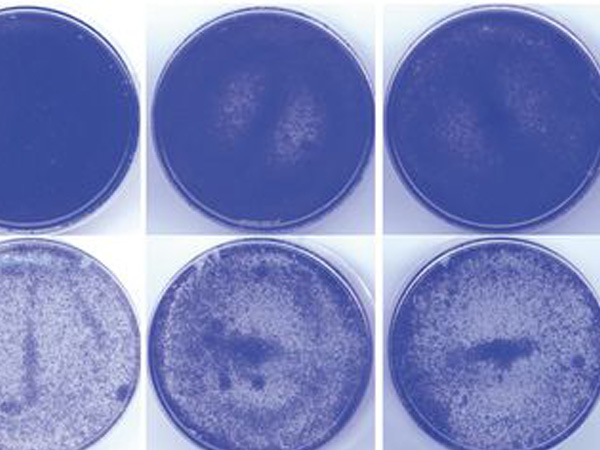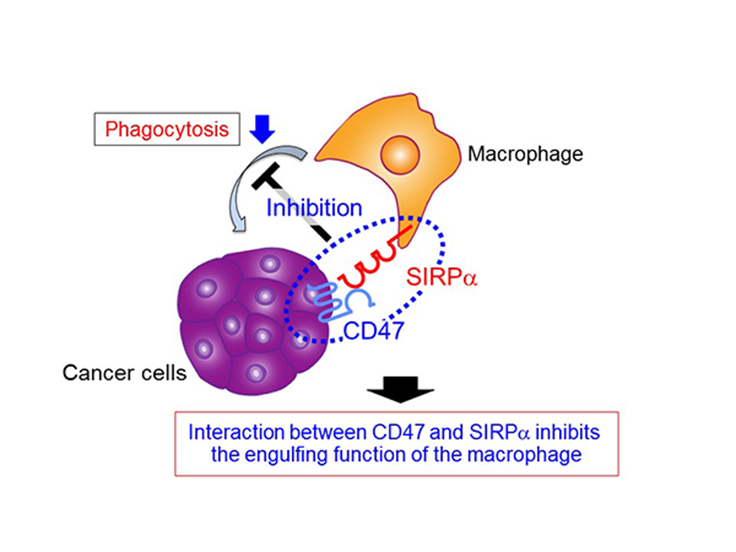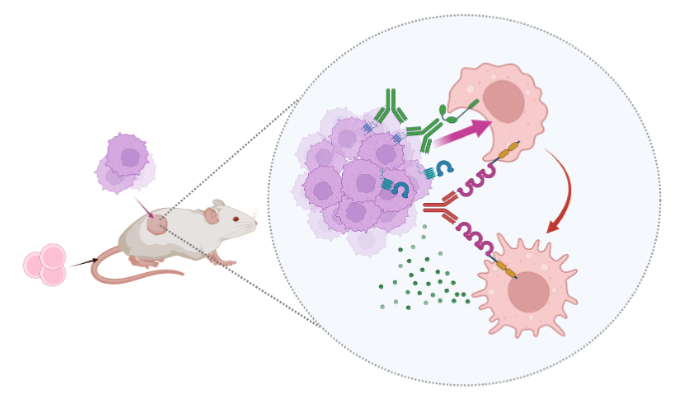A research group including Professor KAMADA Shinji, Research Fellow NAGANO Taiki (both from the Kobe University Biosignal Research Center), and Unit Chief ENARI Masato (National Cancer Research Institute) has succeeded in identifying genes that control cellular senescence - permanently arrested cell growth. The process involved treating liver cancer cells using anticancer drugs of various concentrations, inducing apoptotic cell death and cellular senescence, and comparing gene expression levels. By developing drugs that suppress the activity of these genes, this discovery has potential applications for creating new highly-effective anticancer drugs, or use in anti-aging drugs. The results of this research were published on August 22 in the online version of Scientific Reports.
Living organisms experience various stresses during their lifespans. These stresses include radiation, ultraviolet rays, and chemical substances that directly damage DNA and cause cancer. Organisms are able to speedily repair DNA when it is damaged, but when the damage is severe, they manifest two different cell responses: apoptosis – a type of controlled cell death – and cellular senescence, which permanently suspends cell growth. Both these responses prevent the cell which suffered DNA damage from proliferating and becoming cancerous.
Cancer treatment based on radiation and anticancer drugs aims to destroy cancer tissue by triggering apoptosis in cancerous cells. However, it is thought that this treatment is itself a stress factor that induces cell mutation, causing changes in the cancerous cells. These cells produce clones that have acquired resistance against the treatment, leading to a relapse. One of the changes in cancerous cells caused by this treatment is the appearance of senescent cells. It has been suggested that by secreting various proteins, senescent cells may accelerate the proliferation and malignant transformation of surrounding cancer cells.

Method of identifying the genes that control cell senescence By treating liver cancer cells with different concentrations of the anticancer drug etoposide, researchers induced senescence and apoptosis in cells, comprehensively compared the gene expression levels, and identified the genes that specifically increased for senescent cells.
The research group had previously discovered that cell senescence was effectively induced by using low concentrations of anticancer drugs on cancerous cells. In anticancer treatment, drugs are carried to the cancerous tissue via the bloodstream. The researchers predicted that differences in concentrations of the anticancer drugs would arise based on the distance of the cells from the blood vessels, and so even in the normal cancer treatment process senescent cells would emerge. Therefore, if we simultaneously administer a medicine that inhibits cell senescence during standard cancer treatment, there is the potential for a dramatic increase in treatment effectiveness.
Previously the research group found that if cancerous cells are treated with a low concentration (10 μM) of the anticancer drug etoposide this induces cell senescence, and if they are treated with a high concentration of the drug (100 μM) this induces apoptosis. For this research, they treated cancerous cells under three different conditions: A) with no etoposide; B) with a low dose of etoposide (10 μM); and C) with a high dose of etoposide (100 μM). They then used DNA microarrays¹ to identify the genes in which a rise in transcription levels could be observed.
They predicted that genes which showed increased expression in response to treatment B were mainly related to cell senescence, genes expressed in response to C were mainly those involved in apoptosis, and among the genes which specifically showed increased expression in B compared to C would be genes that play an important role in implementing cell senescence.
There were 126 genes where three times as much expression was recorded under treatment B compared to A, and 25 genes that showed twice as much expression in B compared to C. These 25 genes are expected to express specifically in senescent cells since the other factors caused by DNA damage are removed, and researchers confirmed that the genes involved in causing cell senescence were among them.
If we can develop a drug that targets and regulates the activity of the genes that control senescence identified in this research, by administering it together with conventional anticancer treatment we can limit the emergence of senescent cells and potentially increase the effectiveness of cancer treatment. Additionally, it has been reported that one of the causes of individual aging is the accumulation of senescent cells. This means that drugs which control cell senescence could have potentially large benefits for the development of anti-aging medication products related to health and beauty.
Technical terms
- 1. DNA microarrays
- A method of measuring the gene expression levels of multiple high-density DNA fragments attached to a plastic or glass board using specialized equipment
Journal information
- Title
- “ Identification of cellular senescence-specific genes by comparative transcriptomics ”
- DOI
- 10.1038/srep31758
- Authors
- Taiki Nagano, Masayuki Nakano, Akio Nakashima, Kengo Onishi, Shunsuke Yamao, Masato Enari, Ushio Kikkawa, Shinji Kamada
- Journal
- Scientific Reports








